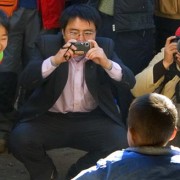SOCIETY
From Collectivism to Individualism
Under the planned economic system, most goods and services were distributed to various places of employment, called danwei. Apartment housing, welfare benefits, and even necessary items like sandals were all rationed in this manner. In general, the consumption of goods was highly regulated through government quotas and ration coupons and special goods such as bikes could only be bought with vouchers. Even if one had the money, no voucher meant no bike. These policies reduced socio-economic inequalities (except disparities between urban and rural regions) but also limited individualism. At the time, most of the population wore similar clothes, sported similar hairstyles, and rode the same bicycles.
Today, individualism has emerged as an important ideal and consumption has become



